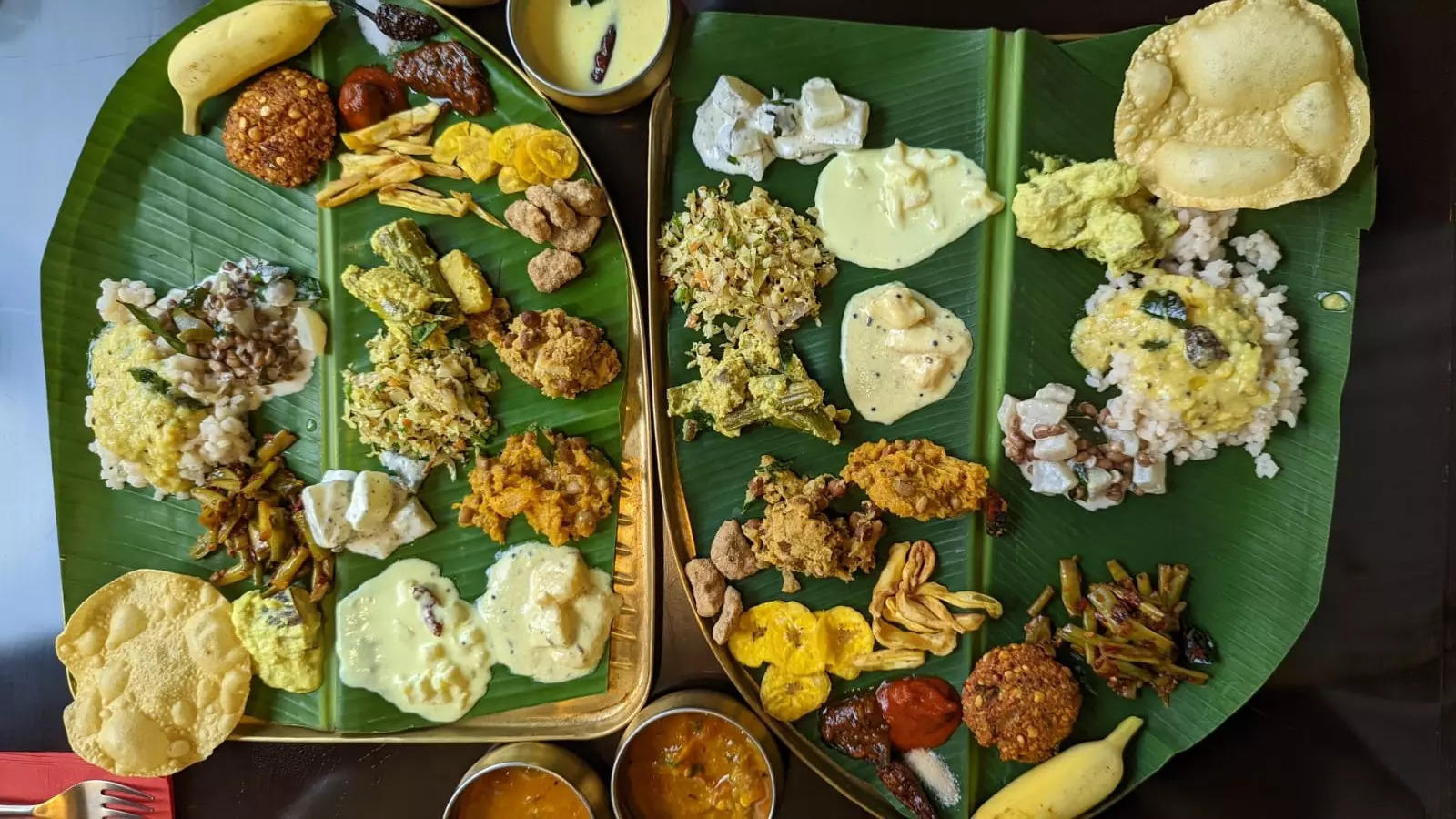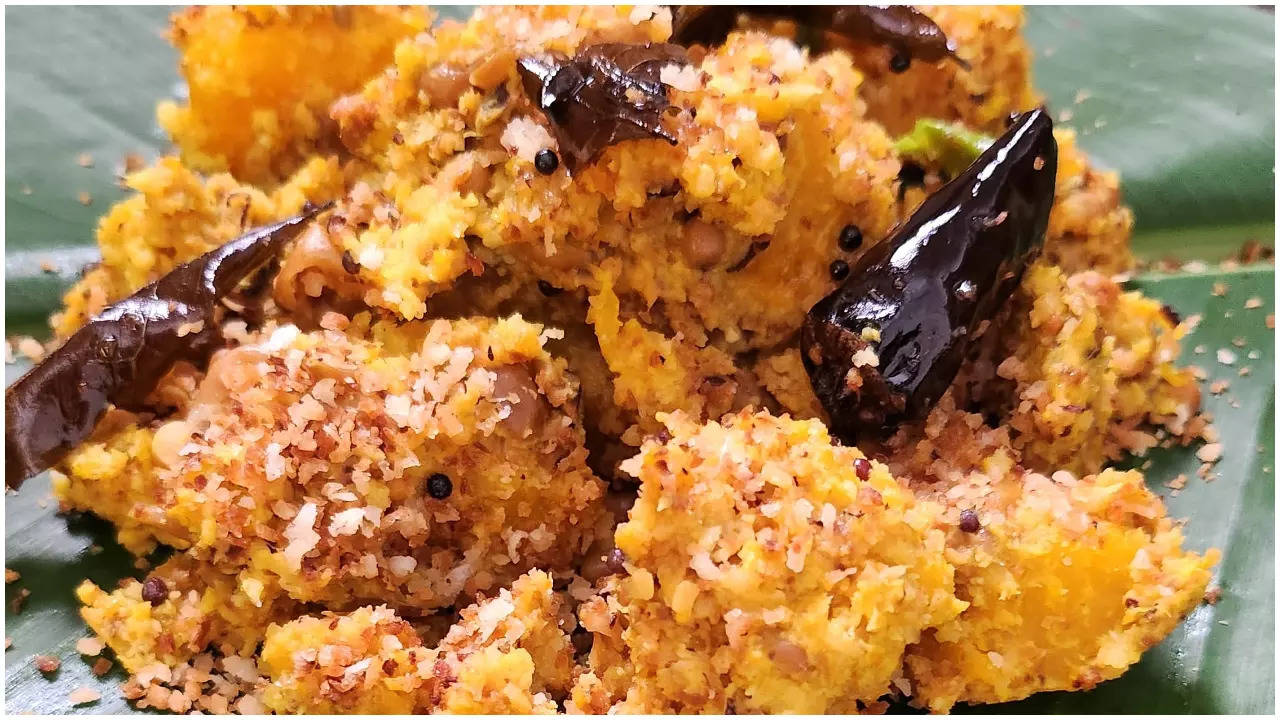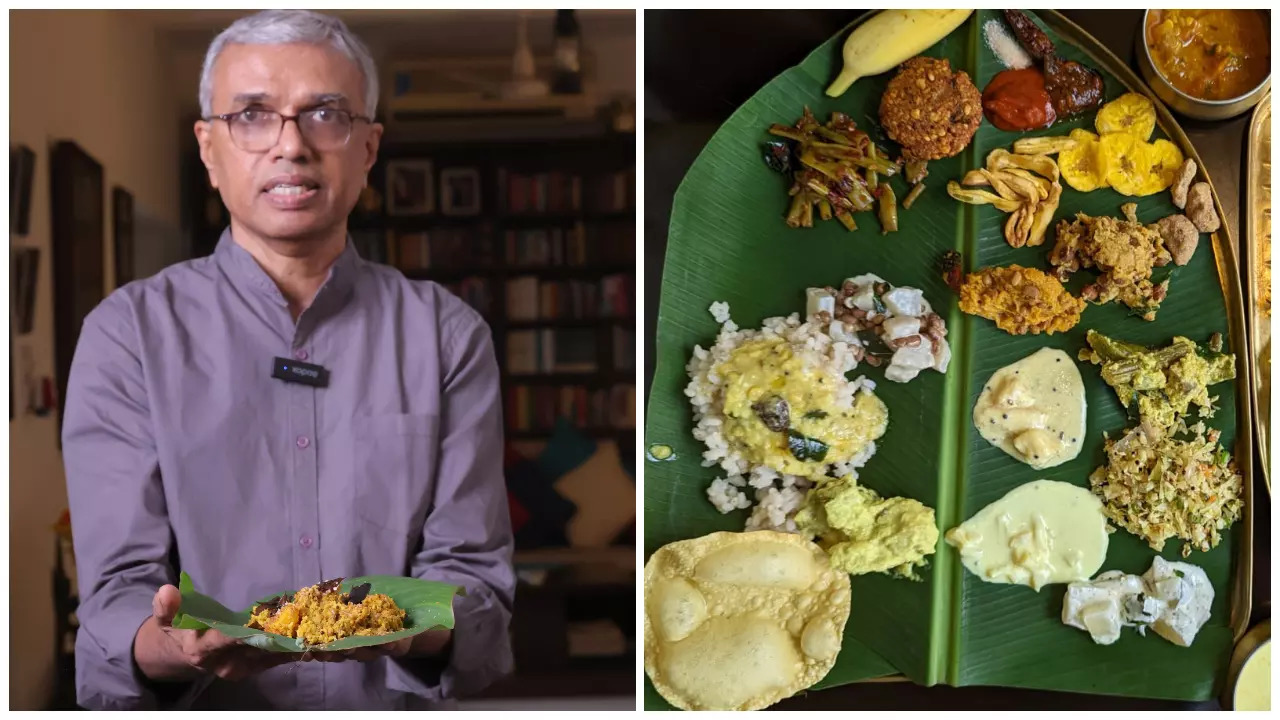Chef Arun cooked the classic errisery for Onam Sadya
OnamKerala’s vibrant harvest festival is a time of togetherness, rich traditions and exquisite flavours, with the grand feast known as Onam Sadhya as its centrepiece. This elaborate meal, traditionally served on a banana leaf, has evolved from a humble array of dishes into a culinary extravaganza, often including 30 or more items. For Arun Kumar TR, a journalist turned filmmaker and restaurateur, the festivals are a trip down memory lane, evoking the sights, sounds and aromas of his childhood in a traditional Tharavad home in Kerala.
In a conversation with Times Foodie, the chef talks about family traditions, memories and more surrounding the holiday.
With Onam just around the corner, how important is the festival to you?
It has always been a time of celebration and will continue to be so. The highlight will always be Sadhya, which I love to cook. As children, of course, we looked forward to the arrival of new clothes; now we buy them for our children.
Your recently published book Feast on a Leaf: The Onam Sadhya Cookbook explores Sadhya as celebrated by generations of your family. Could you share some unique family culinary traditions featured in the book?
In my family, Onam has been, over generations, a time for everyone to come together and celebrate. In my paternal and maternal tharavads in Kerala, the festival was related to the harvest that had just ended. Grains, fruits and vegetables were collected and stored. The ten days were celebrated with music, games, flower carpets and food. Families like mine, who had moved to towns and cities, would make it a point to do pookolam, buy new clothes and hold a sadhya. Today, the only tradition that continues is the sadhya.

Did your family have any unique or special recipes for Onam that you continue to prepare today?
The preparation of avial, erissery and kalan differs from house to house, from the vegetables used to the other ingredients and garnishes. Kalan (raw yam and plantain with curd and coconut) is a recipe that I learnt from my mother, and she in turn had learnt it from her mother and grandmother. I consider our preparation of kalan to be unique.
How do you think the food culture of Onam has evolved over the years, especially with the rise of modern culinary trends?
Nowadays, fewer and fewer people cook sadhyas at home. They either go to a restaurant or order food delivery. Catering of sadhyas has become big business and is not limited to Onam alone but also to other celebrations like weddings. Given the scale of catering, obviously, a lot of modern mechanization has gone into the kitchens. And as sadhya travels outside Kerala, across the country and around the world, adaptations are made to make it more appealing, especially the addition of non-vegetarian dishes. And today, sadhya is available in a box, frozen, in supermarkets across the world, especially in the Middle East, UK and US.
What does it mean? Onam Sadya What does the culinary tradition of Kerala represent and how do you ensure that the essence of this great festival is captured in its preparation?
Sadhya is the best example of not only farm-to-table food production but also sustainable eating. The vegetables I use are seasonal. In preparing Sadhya I focus on this aspect, making sure that traditional ingredients are used.
Could you please explain what are the key dishes of Onam Sadya? Which dish is most important and why?
Sadhya’s dishes can be broadly divided into side dishes, main dishes (curries), entrees (stir-fries) and desserts.
The essential elements in each are:
The main staple food is Matta rice (Kerala rice).
Accompaniments – Kaaya Varuthatha (Banana Chips), Chakka Chola Varuthatha (Jackfruit Chips), Sarkara Upperi (Jaggery Coated Banana Chips), Naranga Achar (Lime Pickle) or Manga Kari (Mango Pickle), Pulli Inji (Tamarind Pickle) and ginger), Inji Thayir (ginger and curd condiment), Pappadum

Main dishes (curry) – Parippu (lentil curry) with ghee, sambar (vegetable and lentil curry), sambar (vegetable and lentil curry), avial (vegetables in coconut chutney), erissery (pumpkin curry), kaalan (raw yam and banana curry), olan (pumpkin stew), cucumber pulissery (curd curry)
Main dishes (stir-fries/Thorans) – Thoran Beetroot (Stir-fried beetroot, Achinga/Payaru/Thoran Beans (Stir-fried green beans)
Desserts – Pal Payasam (rice and milk dessert) and Parippu Payasam (lentil dessert)
The meal should be completed with a glass of Sambharam (buttermilk).
All of these dishes in one way or another represent the fruit of the finished harvest and celebrate nature.
Ingredient Selection: How are ingredients for sadya selected? Are there any specific local or seasonal ingredients that are essential for authenticity?
The key words are “fresh” and “seasonal”. In fact, those words define a good Sadhya. Sadhya is cooked with a handful of vegetables, mainly pumpkins and root vegetables and a couple of fruits like Kerala banana and jackfruit. When I cook sadhyas, I like to source the ingredients directly from Kerala. For the restaurant and catering, we fly them in, which reduces the travel time to a minimum. Traditional Sadhya uses ingredients that are available in abundance and fresh soon after the harvest and rains.
Balanced flavours: Onam Sadya is known for its elaborate array of dishes. How do you achieve a balance of flavours across such a wide range of offerings, ensuring that each dish complements the others?
When you look at how elaborate Sadhya is, it is surprising how minimal the ingredients are used. However, each dish has its own consistency, texture, look and taste. As you move from the tongue or tail of the Sadhya, the textures and consistency vary from crunchy and chewy to thick and smooth to runny. From the salt at one tip of the leaf to the sweetness of the payasam at the other end, the other dishes bring out the other flavours – sour, bitter, salty. The mix of vegetables and the way coconut is used also add to the flavour profile of each dish. At the same time, all the dishes combine to deliver an exciting play of flavours on the tongue.

Modern twists: Have you ever experimented with modern interpretations of traditional Onam Sadya dishes? How do you manage to balance innovation with tradition?
In the case of a sadhya, I believe in keeping it traditional. If a particular vegetable or ingredient is not available, I prefer to sauté a dish rather than try to use a substitute. The only modern innovations or techniques I use are the use of grating or grinding devices and sometimes I prefer packaged coconut milk as it lasts longer. And for people who find it difficult to eat fresh coconut, I advise them to use desiccated coconut; the results are good.
Challenges in preparation: What are the biggest challenges you face while preparing for Onam Sadya, especially when it comes to catering to a large number of guests?
Though the preparation of the dishes is not complicated, the pre-preparation is tricky. The vegetables need to be cut uniformly in different shapes for each dish. For example, the pumpkin for Avial is cut into ‘fingers’, cubes for Erissery and slices for Olan. The coconut paste made for Avial should be rough in texture and very smooth for Kalan or Pachadi/Pulissery. The coconut garnish used for Erissery should be browned just right and not overly so as it would give it a bitter taste. These are the details that pose a challenge while preparing a good traditional Sadhya.
Cultural Significance: How do you personally connect with the cultural and spiritual aspects of Onam Sadya and how do you convey that connection through your cuisine?
Traditionally, cooking a sadhya in a kitchen is like cooking in a temple kitchen. One has to take a bath before cooking and clean the kitchen before cooking. The sadhya on the leaf is served like food is served to the gods in the temple. Apart from this, in a more superficial way, wearing traditional clothes for a sadhya is a way of culturally connecting with the festival. I insist that my staff wear the ‘mundu’ of Kerala while serving the sadhya.
Disclaimer:
The information contained in this post is for general information purposes only. We make no representations or warranties of any kind, express or implied, about the completeness, accuracy, reliability, suitability or availability with respect to the website or the information, products, services, or related graphics contained on the post for any purpose.
We respect the intellectual property rights of content creators. If you are the owner of any material featured on our website and have concerns about its use, please contact us. We are committed to addressing any copyright issues promptly and will remove any material within 2 days of receiving a request from the rightful owner.

